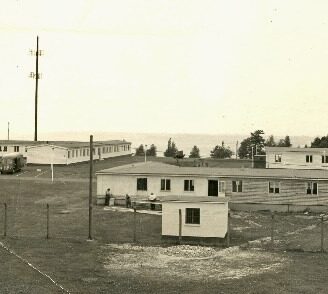The Missileer story below is only slightly related to our old “Site 3” (Grunstadt). It developed as a result of surfing which had found the forgotten story of an RAF bomber that had crashed nearby seventy-seven years ago. I don’t think any of us knew about the event sixty years ago when the Grunstadt site was active: it seems that just about all the locals had already forgotten it too.
Anyway, I thought fellow missileers might be interested. Fred Horky
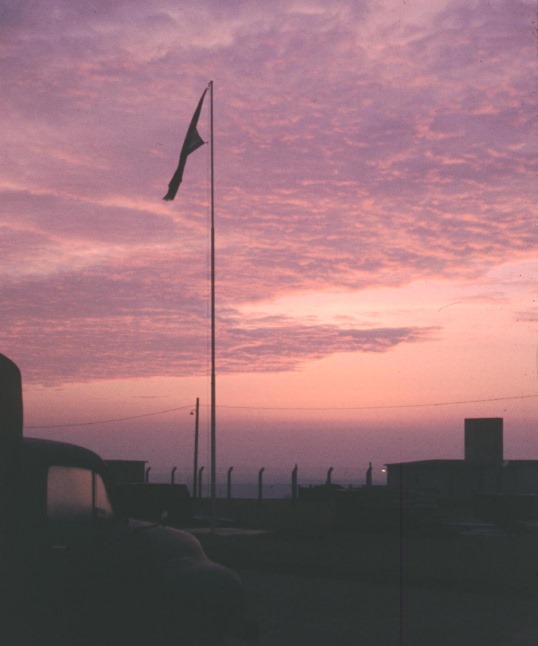
“The View from the Hill”
…and finding the crew of a WWII RAF bomber that didn’t get home, seventy-seven years ago.
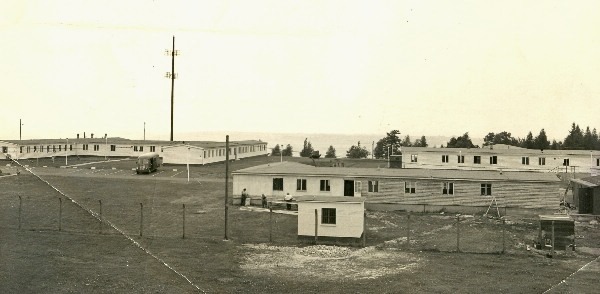
Despite its Stalag 13 appearance, many missileer veterans will have fond memories of the long-ago Mace launch site on top of flat topped Grunstadterberg at the edge of the Rhine River valley.
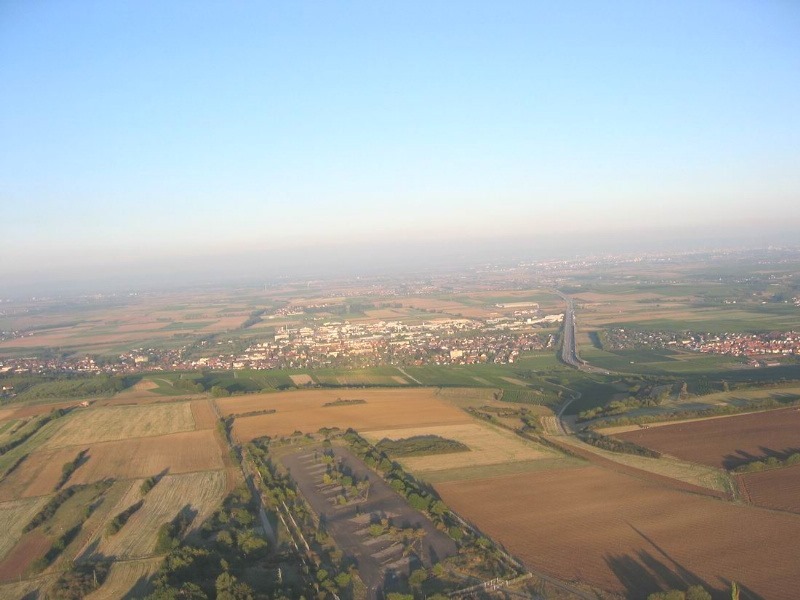
In the picture above, they will recognize the outline of their long-abandoned old launch site; the concrete launch pads are easily discernable. The view is almost straight east.
Today, sport aviation (ultra light, sailplanes, radio control models, etc.) is a favorite recreation on the hill, where sixty years ago we pulled alert duty at the 38th Tactical Missile Wing’s Site 3, “Grunstadt”. Found on-line, the above aerial photo was shot from an “ultralight” sport airplane flying over the old site: Grunstadt missileers will recognize the city of Grunstadt at the foot of the hill. (From this angle, “the hill” doesn’t look like much of a hill!) The A6 Autobahn can be seen curve around Sausenheim to pass at the edge of the hill, past the village and castle ruins of Neuleiningen, all out of the picture to the right. The larger city of Mannheim can be seen in the distance.
Further surfing disclosed that the white rectangle seen alongside the autobahn beyond Grunstadt alongside the autobahn, is a huge freight distribution warehouse. It’s seen again in the view from space in the Google “screen shot”, below.
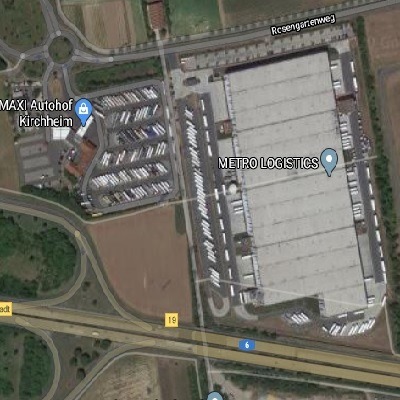
The internet describes it as a truck transport hub of “Metro Logistics”, an international company. (https://www.metro-logistics.com/index.php) To get an idea of just HOW big the facility is, those small white rectangles seen next to the building are actually big tractor trailer rigs like those seen below!
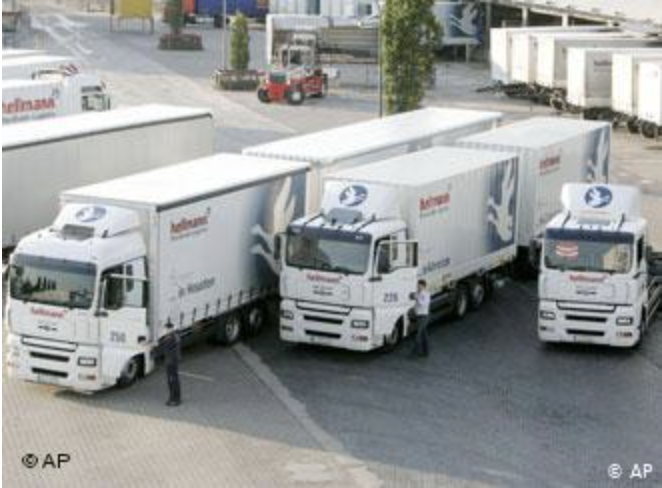
A little further down the Autobahn is the tiny village of Laumersheim. (With a 2018 census population of 914, it doesn’t even rate its own exit from the “interstate”.) It has been there for thirteen hundred years, but until just now I wasn’t aware of its existence. The village is only about four miles due east of our old missile site.
In the Google Satellite image below, the city of Grunstadt is in the middle, while dark green area at the extreme left is the grove of trees that Grunstadt veterans will remember next to the site fence on the north side.

Just to the southeast of those trees the rectangular launch pad compound can be easily picked out in this enlarged detail from the above image.
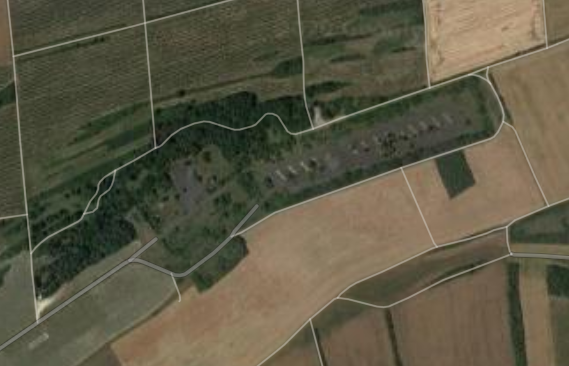
I have fond memories of a bachelor/bachelorette picnic in those woods! The site security fence was right behind us in this picture. (Today, it’s hard to believe I was ever this young!) At the time, I was dating a girl named Nancy, seen here in black. She was a teacher at the DOD dependent school teacher at the Army’s Vogelweh Kaserne in K-town. The guy is Ollie Maier, one of the “sim missile” pilots I flew with on my days off from Grunstadt duties.

At the far right of the larger satellite picture, Laumersheim is marked by the red arrow at right. https://en.wikipedia.org/wiki/Laumersheim
The reason that all these memories were recently stirred, is that just now I learned of the wreck of an RAF WWII Lancaster bomber found buried for seventy-seven years under the fields near Laumersheim, along with the remains of most of its crew.

The story of that recovery is repeated below from the History Channel website.
The remains of five British airmen who crashed in Germany during World War II have been discovered near Mannheim, researchers announced on Friday. Their bomber went down with seven men aboard during a raid on a Czech arms factory in April 1943. German soldiers recovered two of the bodies from the wreckage shortly thereafter, but five of the Royal Air Force members remained missing until last week. The British Air Ministry, which conducted an exhaustive search for the men after the war, had concluded that they likely ditched in the sea.
Pilot Alex Bone and his crewmates took off from Lincolnshire, England, 69 years ago in an Avro Lancaster, the heavy bomber used by the RAF in the skies over Europe during World War II. Of the 327 bombers that set out in April 1943 to attack a munitions plant in German-occupied Czechoslovakia, 36 would never make it back to their base—including Bone’s plane. It is believed that he and his crew battled German antiaircraft fire before plunging into a field outside Laumersheim in southwestern Germany.
As it searched in vain for the missing crew in the years following World War II, the British Air Ministry had no idea that German troops had already buried two of the men in Mannheim. Meanwhile, a local teenager named Peter Menges had witnessed the fiery crash and knew the exact whereabouts of the wrecked Lancaster. Decades later, Menges, now 83, joined forces with Uwe Benkel, a health insurance clerk who moonlights as a military history researcher and has helped recover more than 100 planes. Last year, for instance, Benkel unearthed the remains of another British crew near the German village of Schwanheim.
After using metal detectors and ground-penetrating radar to confirm the crash site near Laumersheim, Benkel and his team uncovered the Lancaster bomber’s engine and landing gear, along with hundreds of bone fragments thought to be the remains of the missing men. Relatives have been notified and plans are being made to bury the men in a shared coffin at Germany’s Commonwealth War Graves Cemetery.
Benkel told British news sources that area residents wondered why he was searching for former enemies who had bombed German cities. “It doesn’t make a difference if they are German or British,” he told The Telegraph. “They were young men who fought and died for their country for which they deserve a proper burial in a cemetery.”
Anyway, I thought my fellow Grunstadt veterans might be interested!
Thanks for your time!
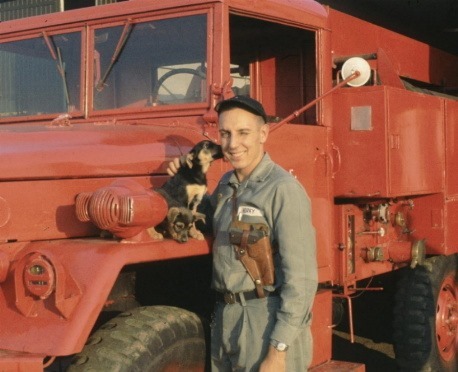
Fred Horky … Grunstadt, 1959-1961
P.S. The above picture dates to the original 1959-1960 pre-RFML, “long-count” Mace launch posture, when alert duty wasn’t tied so closely to the missiles, and allowing a break to visit the Site 3’s firehouse puppies. The portliness of my midsection back then was not me, but rather the leather pouch under my shirt containing the doomsday code words, which was also the reason I had to carry the M1911A1 “.45”


